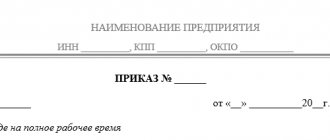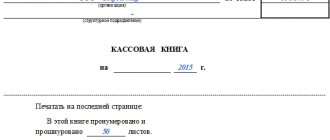Introduction
If we consider full employment from the side of macroeconomics, then this term refers to the stage during which all the economic resources available to the country are used. First of all, we are talking about the workforce, that is, people who can work. In this case, it is considered that there is no unemployment in the country, that is, every citizen is employed and performs some functions. It would seem that this is the right situation, but the laws of economics state that there cannot be full employment (the exception is force majeure situations, mainly war).
Full employment means no unemployment
One way or another, in any society there will be unemployed people, and the task of macroeconomics is to reduce their number to a minimum, since they do not pay taxes and consume resources instead of producing them. Accordingly, even with full employment in the state, there is a certain percentage of unemployment simply because it is impossible to force everyone to work in a certain time period. If more people work than expected, taking into account natural unemployment, then inflation begins. At the same time, for different states, systems and societies, the unemployment rate may be different, that is, exact figures do not exist. This level is established empirically and there is no inflation either in wages or in prices for goods.
The nuances of full employment
Let's look at why full employment cannot exist in a state. The point is that everything depends on progress. The country's society, technology, industry and other assets are constantly evolving, and they are constantly undergoing profound changes, both technological and structural. Every day some enterprises close, some open, which is why unemployment usually occurs. Its quantity is also influenced by the human factor: people leave work because of fatigue, because of a desire to change something, because of moving, because of illness or for family reasons.
The reasons described above lead to the fact that so-called frictional unemployment appears in the country, which appears again and again as enterprises and organizations close. Based on this, economists argue that full employment implies a level of unemployment at which employers maintain a high demand for labor, both highly skilled and low-skilled.
Types of employment
If you take a closer look at the labor market, it turns out that in addition to full-time employment, specialists distinguish several other types. Let's take a quick look at the generally accepted classification.
- General – involves the employment of the population in all types of jobs that are in demand in society. In fact, it includes absolutely all employees working in different fields of activity.
- Part-time employment involves performing work activities for a period of time that is less than the established norm. In this case, payment is made in proportion to the number of hours during which the employee was engaged in performing his own duties.
- Non-traditional employment involves temporary, seasonal or self-employment of a worker.
- Unregulated. Such activities do not fall within the scope of official relations between the employee and the employer, that is, they are actually carried out without drawing up an agreement.
What does full employment mean for businesses?
Above, we have already figured out what full employment represents for the state and the macroeconomy. Now let's look at what this process means in business and microeconomics. It needs to be considered as a whole, without reference to an industry or any company. In microeconomics, this term implies that there are no vacancies in the field, and at the same time, enterprises operate at full capacity, attracting the maximum possible profit.
Unlike macroeconomics, in microeconomics full employment is quite acceptable. Moreover, it is often found in companies that have achieved peak performance through sound planning and sound management. At the same time, there may be unemployed people in a city, region or industry, but at a specific site all vacancies must be filled . If we look at the topic figuratively, then such enterprises can be imagined as islands that are located in a sea of general unemployment. Moreover, unemployment can occur both among specialists in the field where enterprises operate, and in the labor force as a whole.
Full employment is unattainable due to objective reasons
What does the term mean for subjects?
Next, let's look at what full employment means for a specific person. Everything is simple here: for an employee, this term means participation in the labor process for the period provided for by law and the employment contract. Moreover, this period can be different: a month, a quarter, a year, three years, etc. Accordingly, for the work done, the employee must receive the salary established by law and the employment contract, which will satisfy his needs.
In general, everything seems simple, but you need to understand what exactly the term “participation in the labor process” means. It means the employee’s work at the enterprise, fulfilling the duties assumed, as well as receiving adequate wages for the work done. It is important to know that employment can be different:
- Complete and incomplete.
- Permanent and temporary.
- Conditional and partial.
- Shadow and secondary.
- Irregular and remote.
Every businessman who hires employees, as well as the employees themselves, must understand and know the difference between these types of employment. Its type must be specified in the employment contract and discussed during employment. from an employee to another type of employment, but only after approval and if there are sufficient reasons for this.
Definition
Full-time employment is the performance by an employee of duties during the established working hours, which can be determined not only by law, but also by a collective or labor agreement.
While discussing this term, there are two other important concepts to discuss.
Primary employment - performing duties at the main place of work. Secondary involves part-time work. Full-time employment is actually the same as primary employment. It can be combined with other activities. However, an employee may be employed at an additional place of work for a short period of time.
What is part-time work
Let's look at what the term underemployment means. Essentially, it means that the employee is working part-time. That is, the employee has his own workplace, there is a scope of work and job responsibilities, but at the same time he works less than required under the employment contract. If a 40-hour workweek is considered the standard, then it is said to be incomplete when an employee works 5–25 hours.
Attention:
Almost all over the world there is a tendency to switch to part-time work for one reason or another. At the same time, a part-time employee has the same rights and responsibilities as a full-time employee.
Reasons for limiting time may vary. On the one hand, the employee himself may desire restrictions in order to devote more time to family, education or personal life. If these are the reasons, then these are voluntary restrictions. If a company or enterprise simply does not need a full-time employee (that is, there is nothing to load him with for the standard 40 hours a week), then this is a forced situation. An employee who works part-time receives a lower salary compared to his full-time colleagues, but at the same time he retains all benefits.
Employment is divided by area and varies by region
How to calculate if the employee is a minor
It would seem that there is no difference: for teenagers, restrictions are set by hours, not by days. But we need to clarify: how many hours does a full working day mean? Children under 16 have the right to work, in accordance with Article 92 of the Labor Code of the Russian Federation, no more than 24 hours per week. But how will they be distributed? Various options are possible:
- 3 days for 8 hours;
- 4 days for 6 hours;
- 6 days for 4 hours.
The compilers of the production calendar were guided by a five-day week of 8 hours each and calculated the average monthly number of working days in 2021 with a 40-hour week.
In our case, if we take an eight-hour work day as a basis, the number of days is 3/5 of the usual “adult” norm. Therefore, we multiply the number of days in a month by 3/5.
So, for example, in September a 15-year-old worker has not 20 days worked, but 12.
It turns out that for the calculation we do not need to divide the working day into parts, but a kind of “adjustment” to the eight-hour period.
Conditional and permanent employment
The term conditional employment means an option when an employee is hired for a position and an employment contract is concluded with him for a certain period or an employee is attracted under a contract agreement. It is also possible to hire through leasing (agreement with an agency) or on call. At the same time, the employee receives the payment due to him for the time worked, but the employment contract can be terminated at any time. In most cases of contingent employment, the employer is not responsible for his employee, especially if he is working through an agency.
If we talk about pure permanent employment, this term implies that the employee is hired for a long-term job. That is, in essence, the validity of his employment contract is not limited and he works as long as he fulfills his job duties and does not intend to retire. Of course, the parties can terminate the contract for one reason or another (for example, their own desire to quit or a reduction in staff), then these are more likely force majeure situations than ordinary ones.
Attention:
Full employment implies the availability of a full package of benefits and social protection for the employee. At the same time, full-time employment can turn into part-time if the company is experiencing problems or financial difficulties.
An employee working under this scheme is the most protected. He receives a full salary without restrictions, he has the opportunity to train and move up the career ladder, he has the right to paid vacations, sick leave, etc. This work scheme is also beneficial for the employer. Firstly, he gets himself a motivated employee who will do everything to stay in the workplace. Secondly, staff turnover is reduced, that is, labor costs for their search and training are reduced.
Supply and Demand Relationship
Another important term in the labor market is the relationship between supply and demand. The excess of one indicator over another creates some imbalance. For example, if the supply of workers exceeds the demand, not everyone can find a vacancy and unemployment appears. If, on the contrary, there are more vacancies than potential employees, there is a shortage of personnel.
In both cases, measures must be taken to correct the situation. For example, when there is unemployment, the state usually steps in. An employee who is left without work can contact the labor exchange to find the desired vacancy or receive benefits.
A shortage of personnel is, as a rule, a problem for an individual employer, who seeks to solve it using various methods. For example, some organizations attract young specialists and spend money on their further training. Some try to offer potential employees the most attractive working conditions.
Secondary and part-time employment
The term full employment means that a person works 40 hours a week and is on the payroll, that is, the necessary deductions are made for him and he is socially protected. Secondary work is work that is combined with the main activity. That is, you can work, for example, as a sales manager (main job), while working part-time as a marketer. Part-time work can be carried out either on the territory of the same company or in completely different companies.
Part-time or secondary employment is a fairly common practice. Often, part-time workers are appointed from existing employees, so as not to attract strangers to the enterprise. For example, if a woman goes on maternity leave, her responsibilities are divided among her colleagues, receiving a bonus for this. If we talk about part-time work, it is similar to part-time work, but it has some differences:
- Part-time employment is called when an employee performs work that is below his qualification level. For example, a school teacher, in addition to his main specialty, also works as a janitor, and a surgeon works part-time as an orderly.
- Work that is carried out part-time for forced reasons.
- Work that falls under the concept of hidden unemployment, for example, seasonal work.
Shadow employment is meaningless for the economy
Supply on the labor market
Supply represents the total working-age population that is willing to exchange its own services for material rewards or other benefits. The offer depends on many factors, among which experts name the demographic situation, characteristics of work activity, the effectiveness of personnel training, as well as the established remuneration system. The type of employment plays an important role in this matter. Full-time means working for the entire shift. There is also a partial one, which can attract employees who are ready to devote several free hours a day to fulfilling their own duties.
Shadow and remote work
Often these terms are considered identical, but in reality they are not. Shadow work is called “left” work, which is done without paperwork. Accordingly, the employer does not pay any taxes for the employee, and the latter is not protected before the law. Both of them break the law, but, unfortunately, shadow employment in Russia is thriving.
Attention:
Shadow work often includes the self-employed population who are engaged in business. This topic includes everything that brings a person regular income, but he does not declare it to the tax office.
If we talk about remote work, then everything here is completely legal. An employee is hired and an employment contract is concluded with him, but he does not sit in the office, but does his work remotely, for example, from home or a coworking space. Today, this practice is quite widespread: people work via the Internet, fulfilling their job responsibilities and not even knowing what their employer looks like. In some cases, remote work may be shadow work, but this is not a necessary condition.
conclusions
So, we have already figured out the basic definitions and operating principles. Now you can answer the question: full-time employment is how many hours and how it works. Therefore, finally, let’s look at the general recommendations that economists give on this topic. Unemployment in one form or another has existed throughout human history. It was possible to ensure that unemployment in a macroeconomic sense disappeared only a few times, and both times were associated with world wars. But even during the war and general mobilization, the rate of unemployment was floating: although the state attracted all available hands to work, after a certain period the unemployed appeared again.
If we talk in general about the level of unemployment and employment, then it is different everywhere. Moreover, the methods of calculation also differ, so comparing one country with another can only be done empirically, and not in exact numerical values . An increase in the unemployment rate is almost always associated with a crisis in enterprises and the state: they begin to close, the state gets rid of officials and public sector employees in order to save money, while payments continue to go through employment centers and the crisis develops even worse. Full employment is good because the state relieves itself of concern for beneficiaries and regulates inflation.




